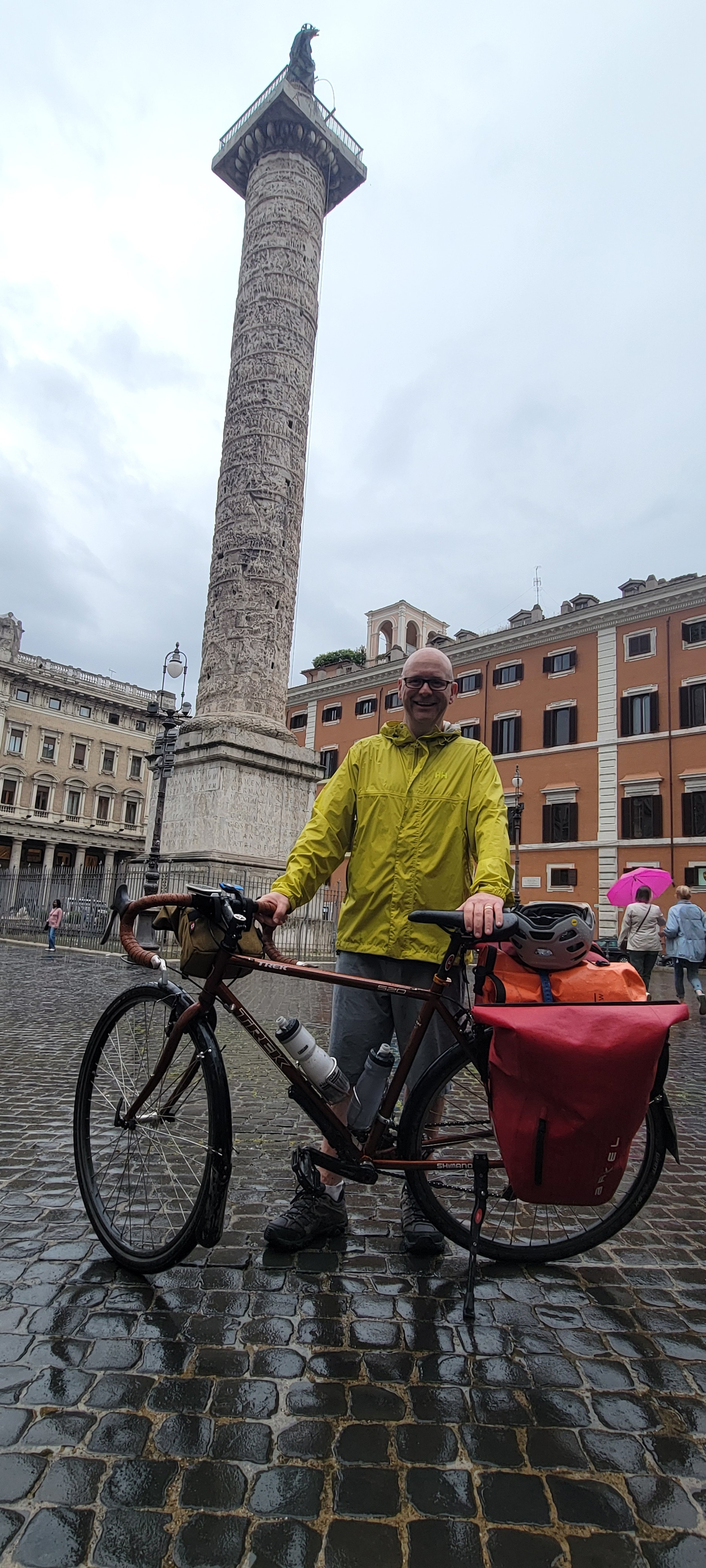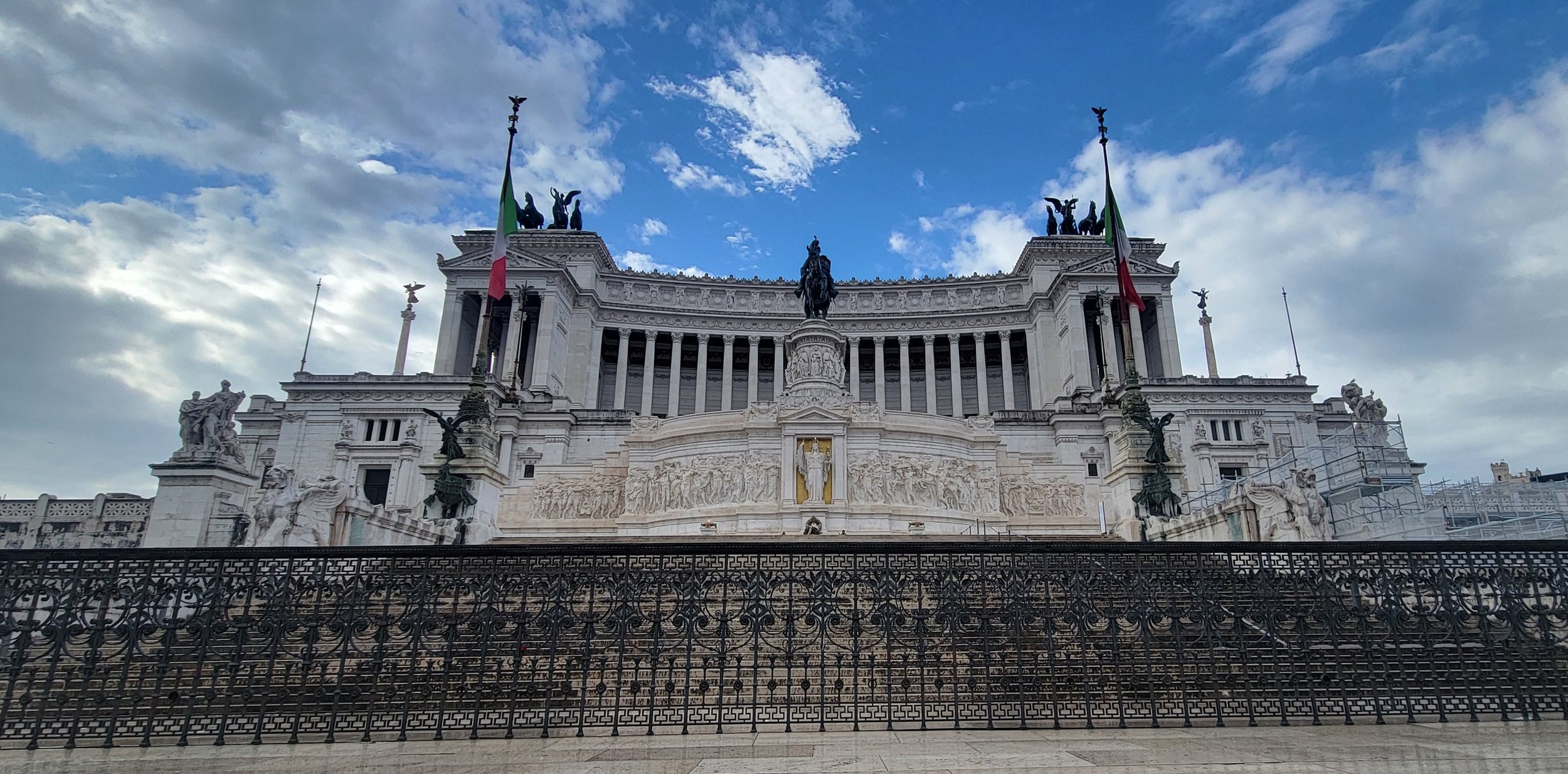All roads do lead to Rome
Marcus and I next to the Column of Marcus Aurelius
Three countries. 32 days. 2,000km. 29 towns. Six flat tires. One new tire. And one fantastic traveling partner.
Marcus and I made our way into Rome on a cycle path that meandered like a serpent next to the Tiber River. The chest-tall grasses that lined the path gave a sense of regalness, as we were about to enter a city that once was the capital of a great empire, and last week marked its 2,777th birthday.
In honour of my Marcus, I thought it appropriate that our first stop be the Column of Marcus Aurelius, which has remained in the same location since it was erected 1,800 years ago. The column is 100 feet tall and tells the story of Aurelius’ military campaigns against the Germanic Barbarians in the north.
I asked an American family if they would take my picture. They didn’t understand at first what they were looking at. I told them it was a column to honour the former emperor, Marcus Aurelius.
“Oh, I see, there’s a statue of him on top,” remarked the father.
I learned later the statue is of St. Paul. Originally, there was a statue of March Aurelius on top of the column, but in the sixteen century Pope Pius had it removed and replaced with Paul. The inscriptions on the base of the column were also modified to be more church-like. And while we’re talking about the church and its questionable respect of history, some of that nice marble found at St. Peters Cathedral in the Vatican was recycled, or stolen, from the Colosseum in Rome.
Rome’s Colosseum was the largest ancient amphitheatre ever built. It could hold up to 80,000 people.
There was one last place that Marcus and I needed to go—The Appian Way. Designed in 312 BC, the Appian Way was one of the first major roads the Romans built. Leaving the city in a straight line, it became the most famous route in the ancient Roman era. Known as Regina viarum, the Queen of Streets, the road stretched hundreds of kilometres to Brindisi, in the south.
More than two thousand years ago, the old pavement was replaced with large, polished basalt stones, which were resistant to the passage of vehicles and people. Sections of those stones are still in place today and show the ruts formed by chariot wheels.
We left the city, under mostly sunny skies and quickly found the Via Appia. But the nice weather was short-lived. Marcus and I had to seek shelter under a large tree while a thunderous waterfall of rain poured from the sky.
Marcus, on the Appian Way, an ancient Roman road, whose basalt stones are still in place in some sections 2,000 years on
But the rain didn’t let up, so we continued. For a long time, it felt like I was in a car wash. I was soaked and water filled my waterproof shoes. I alternated from riding on the bone rattling cobblestone road and the dirt footpath next to it. I was never sure which was faster.
My goal was to take the Via Appia about 25 kilometres south of the city to McDonald’s. In a country that prides itself on food, you’re probably wondering why I was going to McDonald’s. When the restaurant was being built in Frattocchie, it was discovered it sat atop an ancient Roman road (likely a spur road of the Appian Way). Also, discovered were the remains of three people who had been buried next to the road about 1,800 years ago.
Not a sign you often see at McDonald’s
McDonald’s has preserved the road beneath the restaurant. Not only is there a transparent floor inside the restaurant, where you can see the road, but visitors can also go beneath and walk on the 150-foot stretch of road (with the three skeletons preserved next to the road). There are display boards that share the road’s history.
The remains of an ancient road beneath the McDonald’s in Frattocchie
It was 11 a.m. when I looked at the time on my phone, and I still had another 25 minutes to go. I considered turning back. But already wet, I pushed on. The road had turned to a river, and I was going upriver. I passed one guy from France who was running the length of Italy. We were the only two idiots on the Appian Way.
Finally, I arrived at the most unique McDonald’s I’ve ever been to. After eating a burger and fries, I went downstairs to this surreal museum.
Fortunately, the sun came out when it was time to cycle back.
Monument to Victor Emmanuel II
“Okay, let’s cruise through the city one more time” I said to Marcus, as we came to the Circus Maximus, where chariot races were held. With the confidence of a gladiator, I steered us through the streets of Rome, jockeying with cars, buses, and streams of tourists. We passed the Marcellus Theatre and the monumental Monument to Victor Emmanuel II, who was the first king of a unified Italy, in the late 1800s. Straight down the Via del Corso we went. Then, a couple of left turns to navigate one-way streets, and we were back at our hotel.
Over the past month, I discovered that all roads (at least the ones I took) do lead to Rome.






